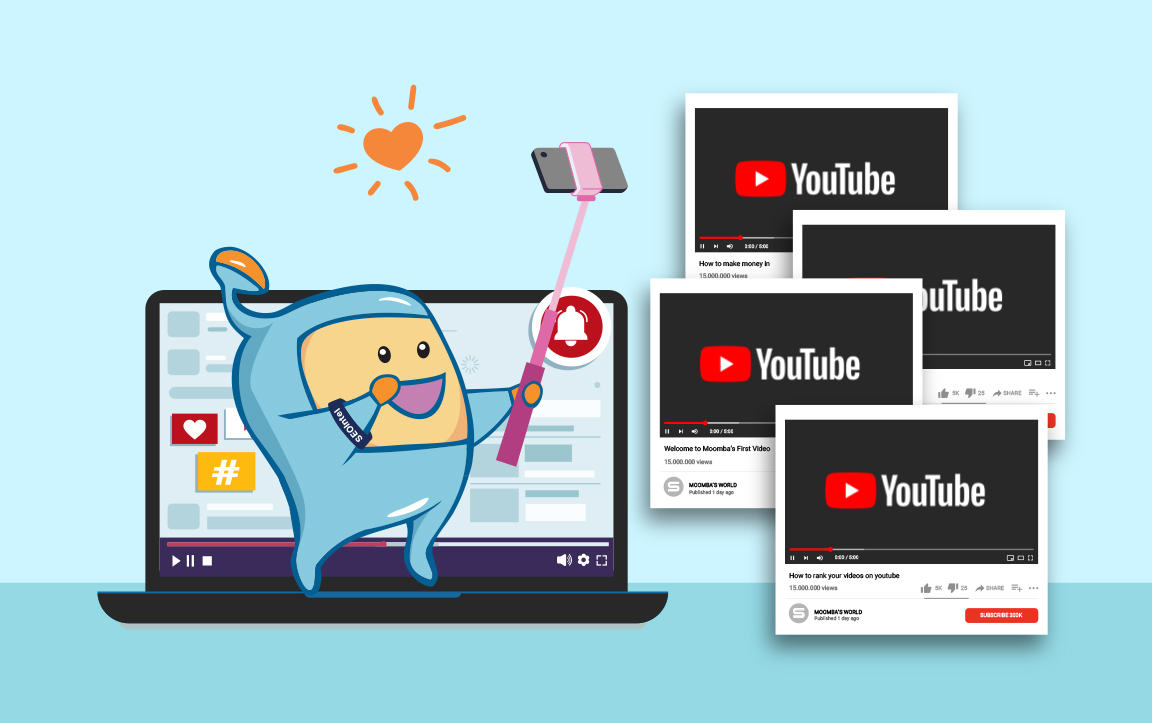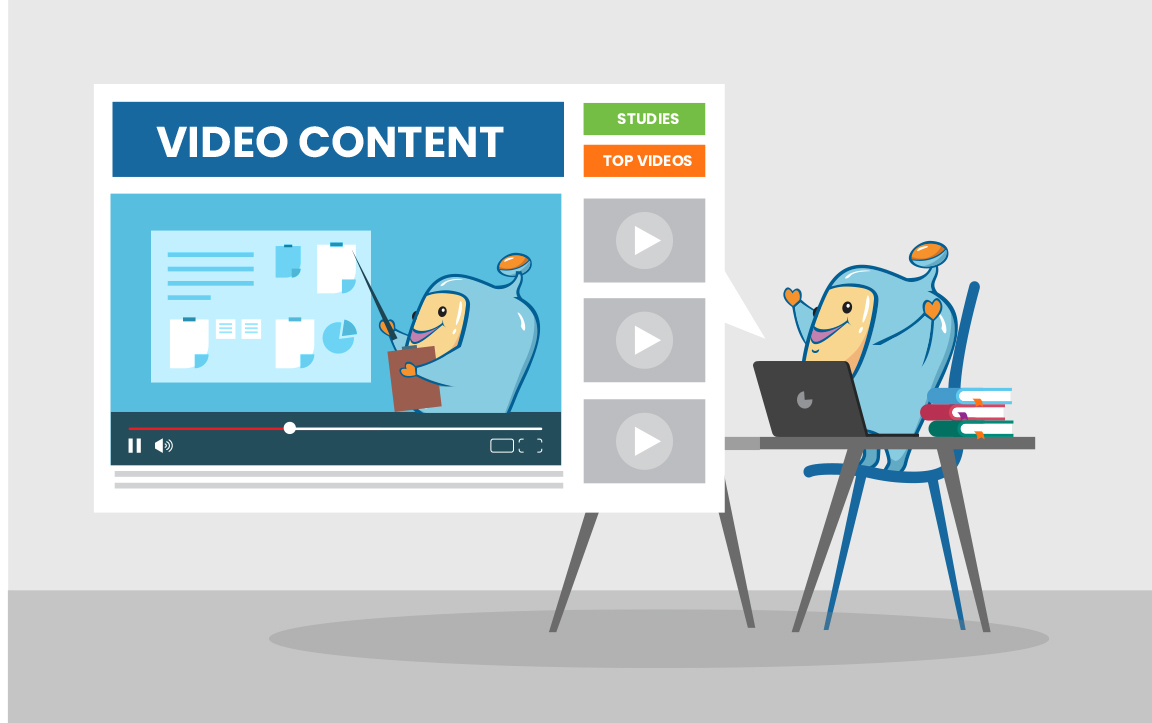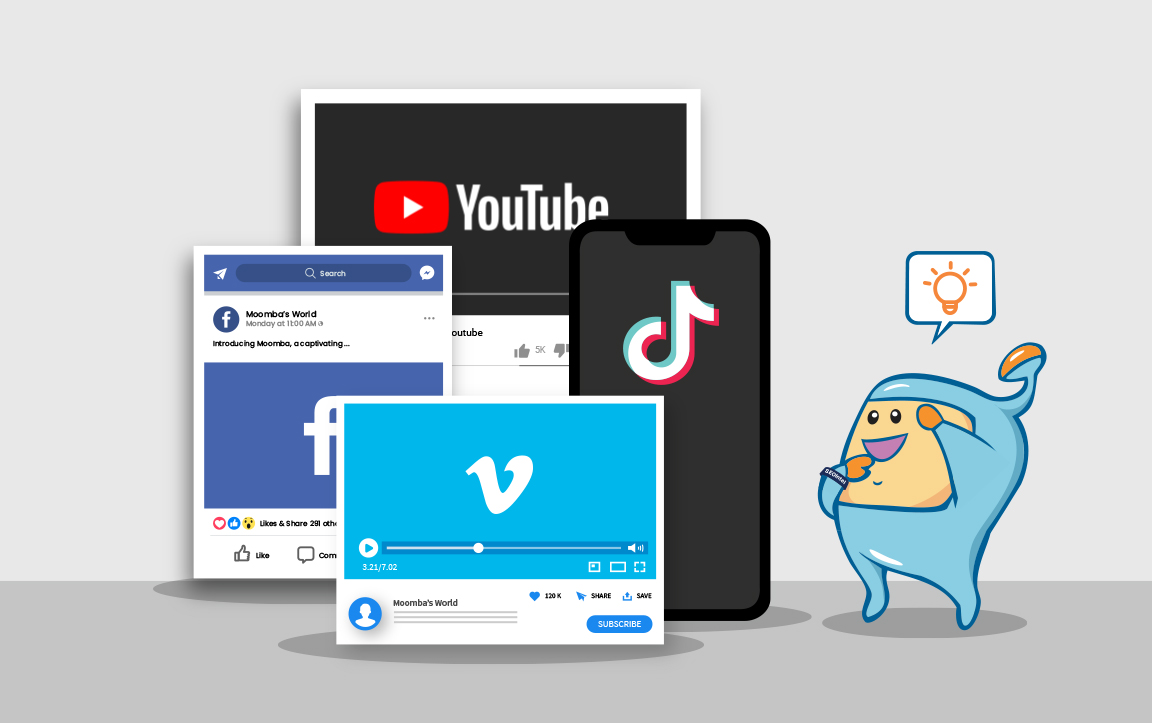Video content has become an integral part of our digital landscape, revolutionizing the way we consume and engage with information.
From vlogs and customer testimonials to animated GIFs and live videos, video content has captured our attention and transformed the way we communicate.

In a world where visual storytelling reigns supreme, video content has emerged as a powerful marketing tool, allowing businesses and individuals to convey messages, showcase products, and connect with audiences in a captivating and dynamic manner.
Whether you're a content creator, marketer, or business owner, understanding the importance and potential of video content is essential in today's digital age.
Here is what you will read in this article:

Video content refers to any form of content that incorporates video elements.
It encompasses various formats such as vlogs, animated GIFs, live videos, customer testimonials, recorded presentations, and webinars.
Video content allows individuals and businesses to deliver their messages, engage with their audience, and convey information using the power of visual and audio storytelling.

The demand for online video content is skyrocketing.
Studies show that a significant portion of consumers prefer watching videos over live TV with 60% of Americans favoring video content.
The amount of time spent watching videos on platforms like YouTube have experienced a surge in viewership.
Consumers aged 18-49 spending 74% more time on the platform since 2015.
This presents a massive opportunity for businesses to reach and engage their target audience through compelling video content.
Video content is highly effective in conveying messages and evoking emotions.
Visual and auditory elements combined in videos can captivate viewers' attention, making it easier to communicate complex ideas, and showcase products or services.
Videos have the power to create a lasting impression and foster a stronger connection between brands and their audience.
Video content offers opportunities for storytelling and creativity.
It provides a versatile medium to showcase products, demonstrate expertise, share customer testimonials, or even entertain with engaging narratives.
Video content is highly shareable and has the potential to go viral, amplifying its reach and exposure.
With the rise of social media platforms, videos can quickly spread across networks, generating buzz, increasing brand visibility, and driving traffic to websites or landing pages.
Video content enhances engagement and interactivity.
It allows for two-way communication, enabling viewers to leave comments, ask questions, and share their opinions.
This interaction fosters a sense of community and strengthens the relationship between brands and their audience.
Embracing video content as part of your marketing strategy can unlock numerous benefits and help your brand thrive in the digital age.
In this article, we will explore the best practices for video content creation.
Whether you are new to video marketing or looking to enhance your existing video strategy, these guidelines will help you maximize.

When implementing video content marketing, it is crucial to select the appropriate platform for publishing your videos.
Different platforms have distinct characteristics and audience preferences, so it's essential to align your video content with the platform's expectations.
Popular video platforms include YouTube, Vimeo, Twitter, Facebook, IGTV, Instagram Stories, Twitch, TikTok, and Snapchat.
Understanding the strengths and nuances of each platform will help you optimize your content and reach your target audience effectively.
Pre-production planning plays a crucial role in creating high-quality videos.
Whether you aim to produce highly-edited videos or spontaneous content, planning is key.
For scripted videos, it involves writing the script, identifying transitions, b-rolls, and graphics.
Even for more improvisational videos, having a clear plan or outline can ensure that your content remains focused and engaging.
Pre-production sets the stage for a smooth video production process and helps you deliver impactful and cohesive messages to your audience.

Creating a suitable filming environment, or studio, is essential for producing professional-looking videos.
Your studio can be a dedicated space, an office, or even an outdoor location.
Ensuring that your studio is adequately set up before shooting will save time during filming and editing.
Consider factors such as noise control, lighting, and acoustics.
Minimize external disturbances, use appropriate lighting equipment, and address any potential issues that could affect the video and audio quality.
Editing your videos is a critical step in maximizing their engagement.
Tailor your editing approach based on the platform where your videos will be published and the desired engagement outcomes.
Keep the content dynamic and fast-paced to cater to short attention spans.
Utilize transitions, graphics, and animations to enhance visual appeal and capture viewers' attention.
Include clear calls to action (CTAs) to guide your audience's actions, such as subscribing to your channel or visiting your website.
Strive to provide value and avoid overly sales-oriented content.
Search engine optimization (SEO) is essential for improving the discoverability of your videos.
Whether you're publishing on YouTube or other platforms, optimizing your videos can help them rank higher in search results.
Conduct keyword research to identify popular terms related to your video's topic.
Incorporate these keywords into your video titles, descriptions, and tags.
By aligning your content with what people are searching for, you increase the chances of attracting more viewers and expanding your audience.

Reposting your video content across different platforms can help you reach a wider audience and maximize its impact across various channels.
While each platform may have its own unique requirements and limitations, repurposing your video content allows you to extend its reach and engage with different audiences.
For example, you can take a longer video originally published on YouTube and extract a key technique or tip to create a shorter, more focused video for platforms like Twitter or LinkedIn.
By adapting your content to suit the specific characteristics of each platform, you can increase the chances of receiving positive engagement and response from your viewers.
In conclusion, video content has become a vital component of modern marketing strategies.
Its ability to captivate audiences, convey messages effectively, and foster engagement makes it a powerful tool for individuals and businesses alike.
By following best practices such as choosing the right platform, focusing on pre-production planning, setting up a suitable studio environment, editing for engagement, optimizing for SEO, and repurposing content across platforms, you can harness the full potential of video content marketing.
Embrace the visual storytelling capabilities of video content and leverage its widespread popularity to connect with your target audience, drive brand awareness, and achieve your marketing goals.
Remember to stay adaptable and keep up with evolving trends and audience preferences to ensure that your video content remains relevant and impactful in an ever-changing digital landscape.